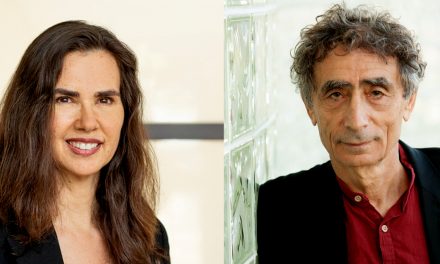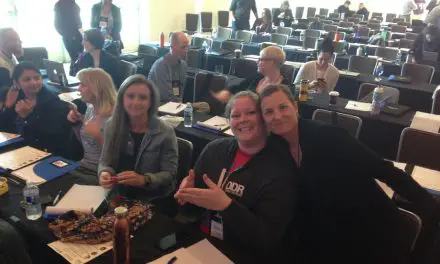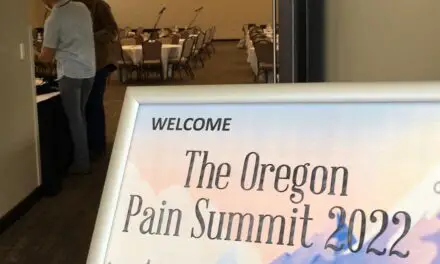Nearly a year ago, I had a wonderful experience attending, reporting, and tweeting the first San Diego Pain Summit. Although it drizzled that weekend that may have made some of Vancouverites think if they had really left home in British Columbia, everyone seemed to enjoy the learning and company.
I finally met friends and colleagues whom I had only chatted and argued on Facebook and Twitter. Not only did I get to hear their voice, see how they animate, and smell their shoulders when we hug each other, I also get to a know a little bit personally, like their favorite food and drinks, where they grew up, and what makes them tick. And they know a little bit about me — like what happens to me after ONE dark beer.
While I agree that last year’s San Diego Pain Summit felt “Woodstockish,” as one of the upcoming speakers Todd Hargrove described, the summit is more than just another manual therapy conference where attendees sit and listen to various speakers present like a TED Talk. It was more about content — the bridging of the science and research with manual therapy and other types of clinical care — than focusing on the “toolbox.” It focuses on the core issues that manual therapists and other clinicians face everyday in addressing patients’ or clients’ pain.
As Dr. Jason Silvernail, who was one of the speakers last year, said:
“I have never liked the toolbox approach to any process – and this includes physical therapy. A toolbox is full of products without an underlying process – and that does not lead to a defensible and consistent approach that handles complexity well. To me, a toolbox or ‘eclectic’ concept is a disorganized approach centered around applying different tools or products without a consistent reasoning process or thinking model behind them. Having tools in your box doesn’t tell you when and how to use them and toward what goal.
“Toolbox approaches are about the practitioner not the client or patient.”
The Pain Summit won’t be preaching “toolboxes” much, and it will have a different “feel.” World-renowned neuroscientist and professor of neurology and neurological sciences Dr. Robert Sapolsky from Stanford University will be the keynote speaker, followed by the speakers in the illustration above, including Dr. Bronnie Thompson, Dr. Fabrizio Benedetti, Dr. Ravensara Travillian, Dr. Sandy Hilton, and Dr. Gregory Lehman.
I have no idea how the founder and matriarch of the San Diego Pain Summit, Rajam Roose, had recruited these brilliant minds. When asked what’s different about this year’s SDPS, she said that there are TWO researchers — Sapolsky and Benedetti — who will be presenting whereas last year, only Dr. Lorimer Moseley presented as the keynote speaker.
“I’m very excited about Professor Michael Shacklock’s presentation. He agreed to give a talk on where he thinks pain science is going and what mistakes we’ve made over the years in trying to incorporate it into clinical practice,” Roose said. “He didn’t want to at first because he thought it would be too controversial, but that’s what the Summit is about — using critical thinking.
“He was one of the first clinicians working with Butler and Moseley 20 years ago, so this should be really interesting. There are going to be workshops this year, and none were offered last year. My initial idea was to hold workshops throughout the year, but I learned that many attendees can only afford to visit San Diego once a year. So they preferred to have workshops during the Summit.
“And we have a couple events planned. Paul Lagerman, of The Naked Physio, is going to do a one hour ‘Clinicians Get Creative’ event, where manual therapists have sent in artwork they’ve created to use when discussing pain science with their patients. He’s going to have a slide show and a discussion. The other event is a one-hour round table discussion and live podcast that Dr. Karen Litzy and co-host Paul Lagerman are going to do with Summit speakers Dr. Greg Lehman, Dr. Bronnie Thompson, Dr. Ravensara Travillian, and Dr. Sandy Hilton.”
So why should massage therapists attend? What will they get out of this?
“I think they will get a great deal, especially from the presentations on communication. [Massage therapists] do work with people in pain, and some are in chronic pain that they are going to have to deal with their entire lives. As massage therapists, we are positioned perfectly for helping create lifestyle changes in our clients.
“We don’t have the same restrictions that physical therapists and other healthcare practitioners have, especially when it comes to the amount of time we can spend with each client. I think that seeing the research Dr. Sapolsky has done on the effects of stress will really drive home to massage therapists the importance of being able to provide a relaxing massage.
“Often, those who want to offer relaxing sessions are ‘pooh-poohed’ by their colleagues for not being ‘serious’ enough. When we can see the research of the damage that stress does to the body, then we can see how creating a relaxing environment can be helpful, especially if we are working with chronic pain clients.
“Another concept that requires clarification is the placebo effect. Dr. Fabrizio Benedetti is the world’s foremost researcher and expert on this subject and his presentation will definitely clear up misunderstandings. And probably create even more questions!”
As for grabbing Dr. Sapolsky’s and Dr. Benedetti’s attention, Roose simply just emailed them. “Nothing special,” Roose said. “I just wrote them and told them about the Summit, and they thought it was a good idea.
“I emailed Dr. Sapolsky and told him about the Summit. He responded that it sounded interesting and then put me in touch with his agent. With Dr. Benedetti, I had read his book The Patient’s Brain, and thought he would be a great addition to the Summit. I sent him an invitation to come speak at the 2017 Summit, but he was keen to speak sooner. So he was scheduled in this year as a last-minute addition.
“I’m so honored they wanted to come speak and am excited for our professions to be able to hear them in this context.”
Dr. Bronnie Thompson
I’ll be presenting a workshop to help participants become like Bruce Lee’s philosophy of Jeet Kune Do. But seriously, I’ll be helping people develop skills for getting from ‘maybe’ to ‘yes’ without tears. Finding ways to be like water, getting to where the person and the clinician can find a way around or through the problem of pain. Mainly focusing on refining communication skills by using motivational interviewing, but with a twist – to show how and why timing is everything.
“Why did I agree to speak? With such a strong community of practice where clinicians read research and challenge one another to find out what it means in practice, to be better at helping the people they treat, why wouldn’t I? I know that I’ve prepared more than I ever have for this presentation simply because I know the participants are going to want to really understand HOW to use it — and the conversations will continue over many different forums as participants puzzle out what it means to them in their practice.”
Alison Sim
“At the summit I will be presenting some information on cognitive behavioural therapy (CBT) as a treatment entity for persistent pain. I will be reviewing the current literature, exploring ways that therapists can use and understand more about CBT as a means to improving communication with their clients, and understanding how we can increase our collaboration with psychologists and other health professionals to create multidisciplinary teams even in private practice settings. These are topics that I find fascinating and have been really helpful for me in my own clinical practice.
Sim also attended last year’s SDPS, and that influenced her decision to speak this year.
“Yes, I made the journey last year all the way from Melbourne, Australia, and took out the prestigious inaugural prize for the ‘Furthest Traveled Attendee” (Although Lorimer Moseley tried to argue that his travel from Adelaide, Australia trumped mine!). I had such a fabulous experience last year, not just learning from the speakers themselves but from the social interactions. I felt like I had found ‘my people’ – such a warm and welcoming bunch of people who I have continued to get to know better via social media in the months since then.
“After attending last year’s summit and knowing that [my family] was making the move to the U.S. later that year, I decided to submit a proposal to Rajam to speak. CBT was something I was already speaking about as a clinical entity for the treatment of pain, together with Dr. Jo Sherry, a clinical neuropsychologist. We ran workshops for health professionals on the topic of pain education and CBT. I am really passionate about the material that I will be speaking about and believe that the best way to get health professionals to look to such entities to help improve their clinical outcomes is to start the conversation!”
Gregory Lehman
“The biopsychosocial model is useful in helping therapists address the multidimensional nature of pain and injury. It is difficult to determine which aspects of the BPS contribute to a paitent’s pain presentation but for many painful states there may be biomechanical component that is relevant.
“Kinesiopathology or pathological movement is often touted as being important in painful states. There are instances where how someone one moves might be relevant to pain but under other circumstances the identical quality of movement may be irrelevant. This lecture will explore two commonly suggested kinesiopathologies and provide a framework to help clinicians decide when biomechanics matters.”
Todd Hargrove
“My presentation at the summit is called Insights on Movement Therapy From a Feldenkrais Perspective. The purpose is to discuss some ideas from Feldenkrais that will help people understand why what they are doing with clients works and how to make it work better.
“I am guessing because Rajam liked my blog at Better Movement and/or my book, A Guide to Better Movement. I’m honored to be included with such a great list of speakers.”
Alas, I cannot conclude this preview of the 2016 SDPS without mentioning our humble yet boisterous MC, Jason Erickson, who is currently the president of the AMTA Minnesota chapter.
“I was thrilled to be invited to be the MC again. It’s an honor to be part of any high profile event, but the SDPS is special. Nearly everyone I spoke with said it was the best professional conference they had ever attended, and I felt the same way. It was fun and amazing and I went home with great information and new/strengthened friendships.
“This year I expect more of the same, but we’ll have a different roster of speakers and a different mix of participants from around the world. The classes offered before and after the Summit are a new dimension, and a lot of people are going to learn useful skills for their clinical practices, me included. The overall emphasis of this year’s event is upon the psychosocial aspects of the pain experience and how to navigate that in manual therapy practices. These are things we need to discuss and work to understand, and I’m really looking forward to it!”
Massage & Fitness Magazine will be covering the event along with Dr. Keith Eric Grant and Dr. Karen Litzy. Follow us on Twitter here and the hashtag is #sdpain.
If you can’t make it to the Summit, no problem! SDPS has livestream videos that you can watch at the comfort of your own home. You will also be able to participate in the Q&A sessions.
Or if you just want to visit San Diego for the Baywatch weather and hanging out with some of us for dinner, this could be your only chance this year to meet up and connect with some of the brightest minds in manual therapy and research.
A native of San Diego for nearly 40 years, Nick Ng is an editor of Massage & Fitness Magazine, an online publication for manual therapists and the public who want to explore the science behind touch, pain, and exercise, and how to apply that in their hands-on practice or daily lives.
An alumni from San Diego State University with a B.A. in Graphic Communications, Nick also completed his massage therapy training at International Professional School of Bodywork in San Diego in 2014.
When he is not writing or reading, you would likely find him weightlifting at the gym, salsa dancing, or exploring new areas to walk and eat around Southern California.





